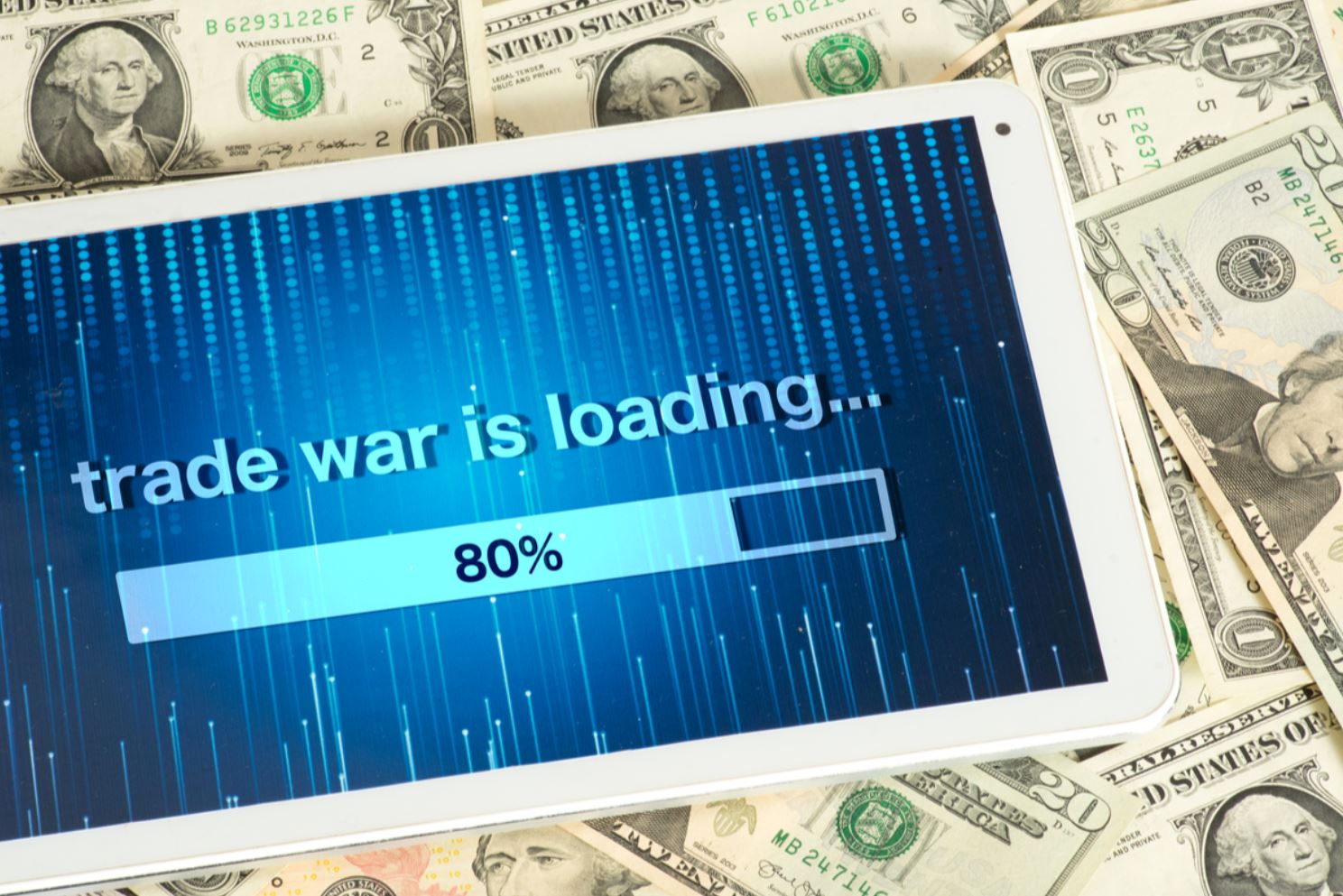 By Max Gulker
By Max Gulker
The trade war initiated last year by the United States is costing the global economy dearly. As observers around the world digest economic data from the second quarter, the harm manifests itself in different ways around the globe.
Distilling a single narrative about why and how the trade war has harmed world economies is nearly impossible. A look through news and commentary in recent weeks shows that the damage from the events set in motion by President Trump’s tariffs does not come from one single chain of cause and effect, but emerges from many sources and reverberates worldwide.
The Bottom Line
Isolating the impact of single policies or events on macroeconomic variables like GDP and investment is notoriously difficult. Estimates that attempt direct global harm from the trade war must be approached with caution, but can provide a sense of the magnitude of the damage.
Economists at the International Monetary Fund estimate that the trade war will take 0.2 percent off global GDP in 2020. If President Trump goes through with all of his additional threatened tariffs this year, the damage to 2020 global GDP would be an additional estimated 0.3 percent. That amounts to a bit under $200 billion lost due to the trade war’s first year and the potential for more than $250 billion in additional losses from policies in 2019.
American Horror Story
In the U.S., GDP rose 2.1 percent in the second quarter, down from 3.1 percent in the first quarter but slightly outpacing expectations. Consumers appear to be the source of this positive surprise, with spending up a greater-than-expected 4.3 percent. As the chart below shows, the U.S. has felt the pain of the trade war most acutely in business investment and exports.
Businesses monitor trade policy more closely than consumers and are therefore likely to react more quickly. In the past several months alone, the president has threatened massive further tariffs against China, specifically targeted Chinese corporate giant Huawei, threatened to use tariffs against Mexico as a bargaining chip in disputes over immigration, declared a temporary truce in the conflict with China, and backed off the threatened Mexican tariffs.
This chaotic sequence of events has unsurprisingly led to the type of uncertainty that causes business investment to seize up. Indices of policy uncertainty have spiked in recent months, and second-quarter business investment fell by over 5 percent.
Policy uncertainty can also distort business decisions on a large scale. Analysts suggest that part of the gap between first- and second-quarter business investment is due to businesses stockpiling inventory in the first quarter in anticipation of new tariffs down the road, and letting those inventories dwindle in the second quarter. Such distortions can reverberate through the whole economy, causing lost growth that, while difficult to measure, is very real.
For some industries, such as agriculture, the damage caused by the trade war is far from uncertain. The administration announced $16 billion in aid to American farmers hit by retaliatory tariffs, attempting to undo the damage caused by its trade policy.
Only Losers
President Trump is more eager to acknowledge damage to the Chinese economy, taking to Twitter in mid-July to spotlight the fact that China’s second-quarter GDP growth was the lowest reported in 27 years. However, the complex dance between expectations and reported numbers may yield a result less to the president’s liking.
The Financial Times reports that growth in China may have unexpectedly picked up near the end of the second quarter. This news is consistent with more hawkish talk recently coming from Beijing, signaling the Chinese are now less willing to make the kind of deal coveted by the U.S. administration.
Expectations aside, the trade war has taken an undeniable toll on the Chinese economy, and that damage doesn’t happen in a vacuum. Germany in particular has felt China’s pain in its own exports, as well as additional uncertainty over further tariffs President Trump has threatened against automobiles imported to the U.S.
More Dominoes Fall
As is often the case, government intervention begets more intervention, as observers now expect the Fed to cut interest rates in reaction to the slowdown caused in part by the trade war. While such a move could keep the economy growing in the short term, it would mark yet another distortionary intervention in the row of dominoes set in motion by the president’s tariffs. The global slowdown has resulted in fiscal stimulus as well, with China cutting taxes and European Central Bank President Mario Draghi asking the EU for fiscal measures to contain the potential damage.
A trade war does not harm a single nation’s economy or reduce growth in a single economic variable. In our profoundly interconnected global economy, its damage is felt in many places and in many ways. Expectations, investment, growth, and the economic policies of all of the world’s largest economies have faced shocks from the trade war initiated by President Trump. As new threats, moves, and counter-moves are revealed, the only certainty is that damage will continue to reverberate around the world.
Sign up here to be notified of new articles from Max Gulker and AIER.
Max Gulker is an economist and writer who joined AIER in 2015. His research often focuses on free markets and technology, including blockchain and cryptocurrencies, the sharing economy, and internet commerce. He is a frequent speaker at industry conferences, especially on blockchain technology. Max’s research and writing also touch on other economic topics, including governance, competition, and small businesses.
Max holds a PhD in economics from Stanford University and a BA in economics from the University of Michigan. Prior to AIER, Max spent time in the private sector, consulting with large technology and financial firms on antitrust and other litigation. Follow @maxgAIER.
This article was sourced from AIER.org